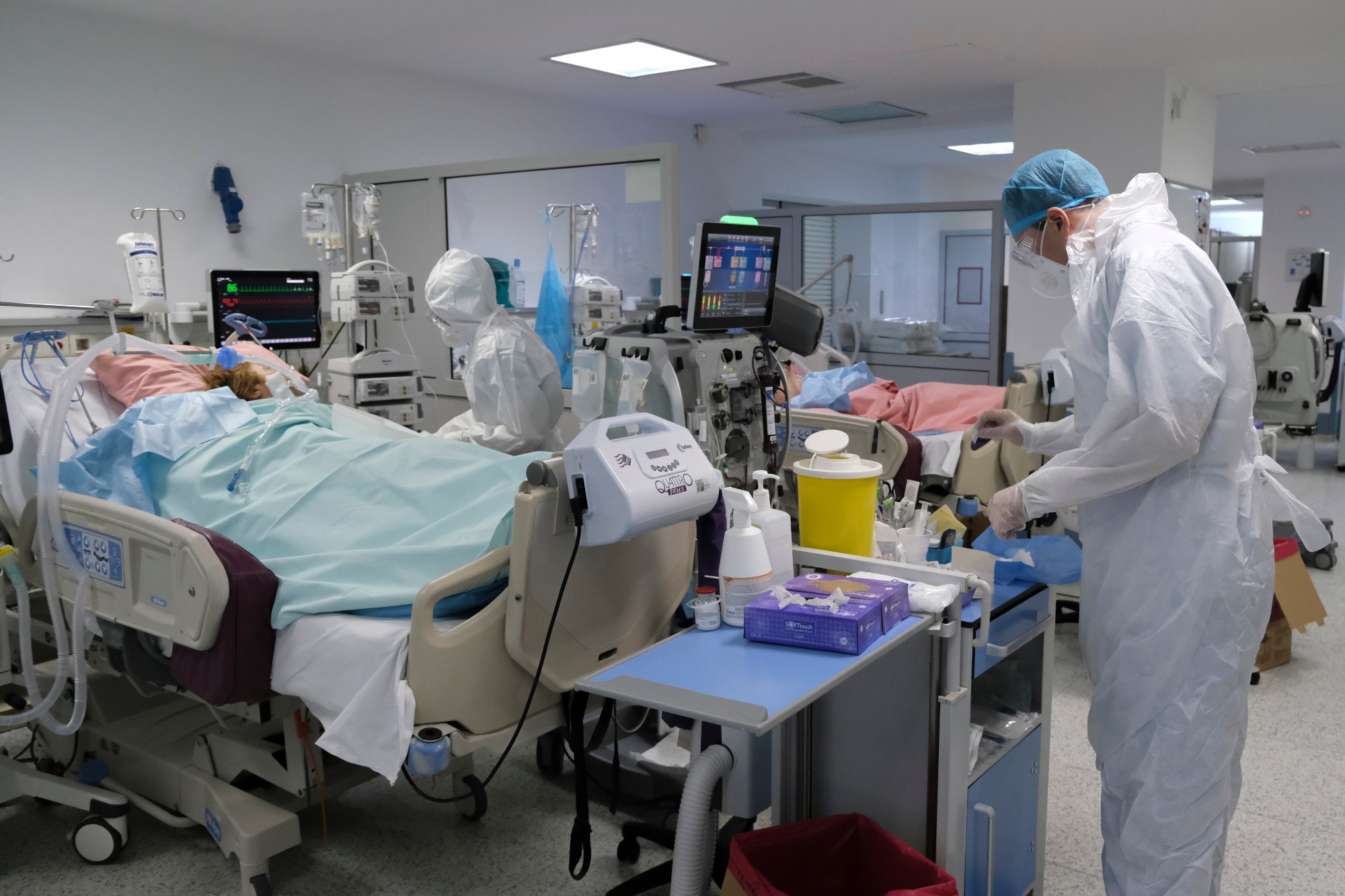In a recent study published in the Viruses journal, scientists explored human herpesvirus-6 (HHV-6) and Epstein–Barr virus (EBV) reactivation among acute coronavirus disease 2019 (COVID-19) patients.
 Study: Epstein–Barr Virus and Human Herpesvirus-6 Reactivation in Acute COVID-19 Patients. Image Credit: Alexandros Michailidis/Shutterstock
Study: Epstein–Barr Virus and Human Herpesvirus-6 Reactivation in Acute COVID-19 Patients. Image Credit: Alexandros Michailidis/Shutterstock
Background
Many severe acute respiratory syndrome coronavirus 2 (SARS-CoV-2) patients exhibit a complicated constellation of features in addition to their pulmonary diseases. These characteristics include autoimmune disorders, hyperinflammatory reactions, and coagulopathies. Nonetheless, the pathogenesis of these COVID-19 symptoms is unknown.
HHV-6 or EBV are lymphotropic herpesviruses that latently infect above 90% of COVID-19 patients. Inflammatory mediators could reactivate these latent viruses, and some of the inflammatory characteristics of SARS-CoV-2 infection match clinical symptoms found during HHV-6 and EBV infection.
About the study
In the current research, the scientists hypothesized that early SARS-CoV-2 infection might frequently exhibit HHV-6 and EBV reactivation, especially for patients with higher inflammation. In 67 acutely hospitalized adult severe COVID-19 patients, the team used priorly validated quantitative real-time polymerase chain reaction (PCR) analyses on the plasma to check for HHV-6 and EBV reactivation.
The researchers from the University of Virginia (UVA), Charlottesville, Virginia, United States of America (USA), started assembling a prospective SARS-CoV-2 clinical sample and natural history group. For this group, hospitalized individuals clinically determined to have moderate to severe SARS-CoV-2 infection by a positive nucleic acid amplification assay were asked if they would be willing to participate in the trial. Those who agreed to participate in the study signed consent forms authorized by the UVA Institutional Review Board (IRB). The UVA Biorepository and Tissue Facility analyzed and archived samples, and the research database included the clinical information from the study population.
To analyze patients earlier in their stay in the hospital, the authors chose samples taken on or around day 7 of hospitalization before the use of anti-inflammatory drugs. The predominant SARS-CoV-2 strain among the study population was the Alpha variant, present in 98.51% of the sample, i.e., 66 subjects, procured before July 2021.
The investigators evaluated the inflammatory condition of the study participants by leveraging the available clinical data. This approach stemmed from the knowledge herpesvirus reactivation connects with pro-inflammatory cytokines and inflammation. The researchers plotted the D-Dimer and C-reactive protein (CRP) values against one another to determine whether the levels of either D-Dimer or CRP tended to be raised among the same patients.
Additionally, the team calculated composite inflammatory score (CIS) values by integrating D-Dimer and CRP levels for each patient. Further, they looked at the correlation between patients who experienced viral reactivation and their inflammatory marker readings, ranking the patients according to CIS to test the theory that a hyper-inflammatory condition was more likely to be linked to HHV-6 and EBV activation.
Results
In the present cohort, the authors found that 15 of 67 or 22.4% of COVID-19 patients exhibited measurable EBV deoxyribonucleic acid (DNA), and three of 67 or 4.5% demonstrated measurable HHV-6 DNA, with viral loads varying from two to more than four log10 across the population studied. The EBV and HHV-6 activation frequency recorded for some healthy groups, including blood donors and additional healthy control cohorts, was somewhat lower than the study cohort.
Although a small number of COVID-19 patients harbored elevated D-dimer and CRP levels, the association generally was weak, with a 0.18 R-value. Elevations in the D-Dimer or CRP levels appeared to mirror various clinical manifestations for many COVID-19 patients exhibiting a SARS-CoV-2 infection severe enough to necessitate hospitalization among the cohort. Besides, HHV-6 and EBV were not linked to indicators of higher inflammatory state, such as CIS, D-dimer, or CRP.
The researchers concluded that high inflammation levels were not associated with HHV-6 and EBV activation at around day 7 of hospitalization, which happened in a small percentage of the current cohort of COVID-19 patients. Furthermore, reactivation of HHV-6 and EBV may play a role in some aspects of acute illness and susceptibility to post-acute sequelae in a small percentage of individuals.
Conclusions
The present study investigated the hypothesis that patients with moderate to severe acute COVID-19 frequently experience the reactivation of latent HHV-6 and EBV. The investigators noted that just a minor portion of the patients in the study showed reactivation of HHV-6 and EBV at the time of screening. The SARS-CoV-2 infection or other causes could have been responsible for this reactivation. However, contrary to their expectations, the team did not detect widespread reactivation of HHV-6 and EBV.
Overall, the study findings imply that after approximately seven days in the hospital, HHV-6 and EBV activation were not frequent characteristics among the SARS-CoV-2 patients analyzed in the study.
Journal reference:
- Brooks B, Tancredi C, Song Y, Mogus AT, Huang M-LW, Zhu H, Phan TL, Zhu H, Kadl A, Woodfolk J, Jerome KR, Zeichner SL. (2022). Epstein–Barr Virus and Human Herpesvirus-6 Reactivation in Acute COVID-19 Patients. Viruses. doi: https://doi.org/10.3390/v14091872 https://www.mdpi.com/1999-4915/14/9/1872